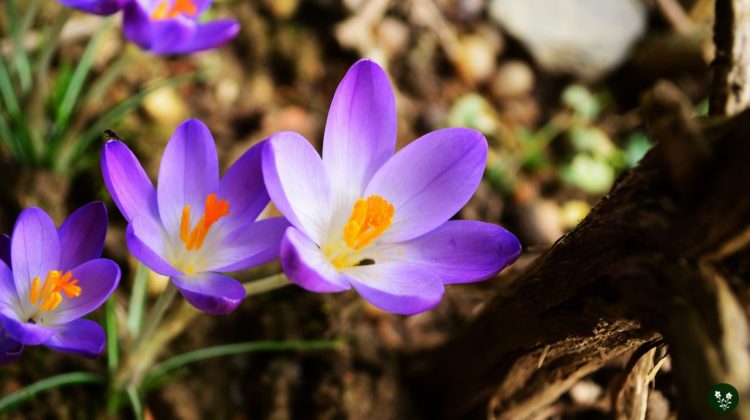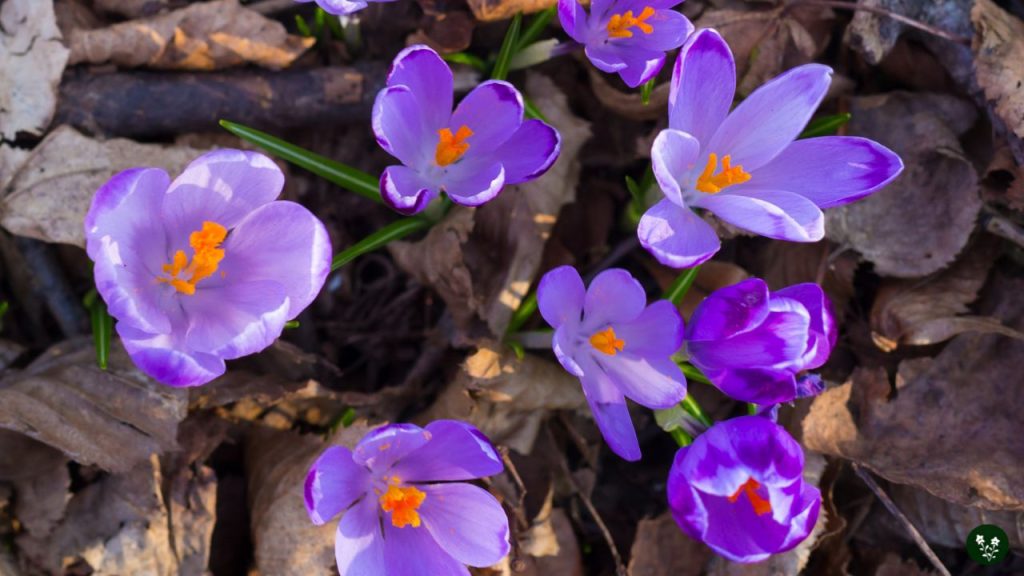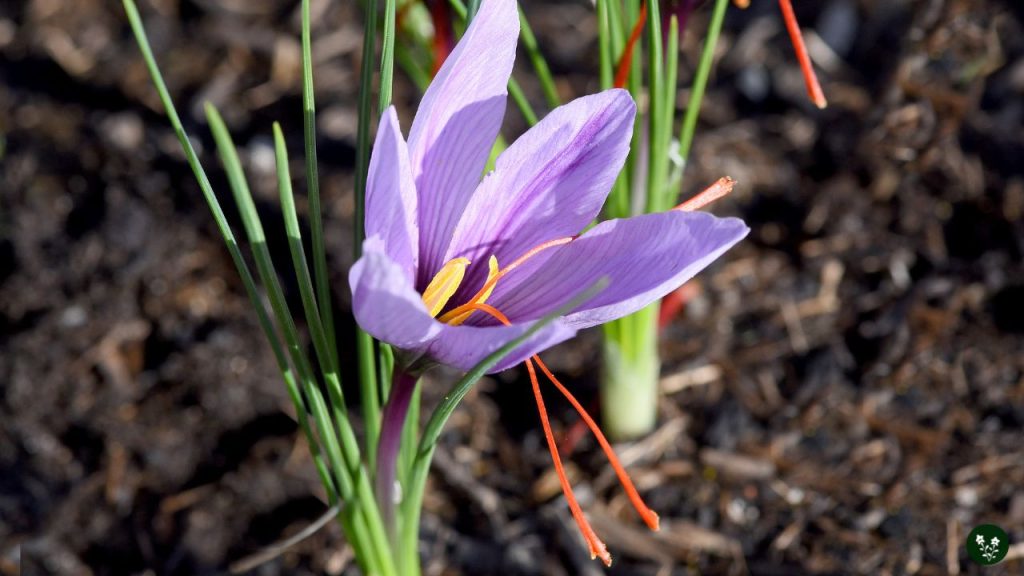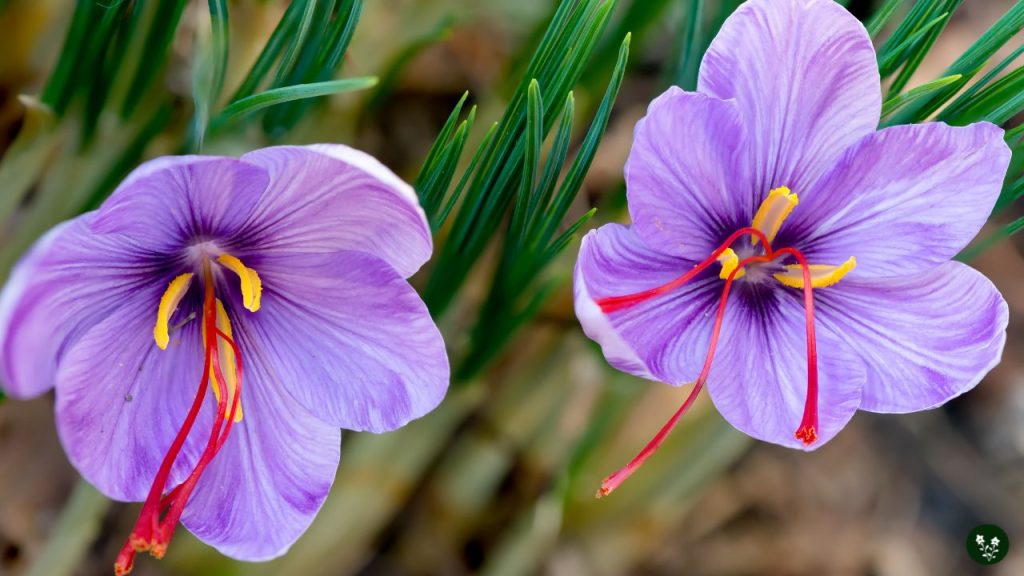
The Crocus sativus, commonly known as the saffron crocus, is a visually stunning flowering plant belonging to the Iridaceae family. Its delicate features and culinary and medicinal benefits have made it a popular choice among many. The name of the plant comes from the Greek word “krokos,” meaning saffron. There are approximately 90 species of perennial plants in the Crocus genus, originating from Asia, North Africa, Mediterranean Europe, and the Alps.
One of the most distinctive characteristics of the saffron crocus is its golden-colored stigmas, which are found in its flowers. These pungent stigmas are used as a spice to add flavor to food and as a dye to color various items after being dried. Not only do these stigmas have a vibrant hue and unique aroma, but they also hold significant symbolism dating back to ancient times. In many cultures, the crocus flower symbolizes youthfulness, happiness, and the arrival of spring. It is also considered a symbol of wealth and prosperity due to its use in saffron production, which is one of the world’s most expensive spices.
All in all, the saffron crocus is an intriguing plant that appeals to the senses and has attracted numerous admirers over time. In this article, we will delve into the detailed description of the saffron crocus plant.

The Crocus sativus, also known as the saffron crocus, is a type of perennial plant from the iris family that is widely cultivated. Although its origins are unknown, it is famous for its vibrant purple flowers that produce highly sought after saffron spice. The spice is derived from the flower’s stigmas, which requires a large number of them to produce just a small amount of saffron. Besides its use in saffron production, the saffron crocus flower holds significant symbolic value, representing youth, rebirth, joy, and gladness.
This plant grows from an underground stem called corm and requires well-draining soil, full sun or partial shade, and adequate moisture during its growing season. It thrives in various climates but prefers a Mediterranean climate with mild winters and dry summers. Corms are planted in late summer or early autumn, a few inches deep and spaced four inches apart. However, overwatering should be avoided to prevent corm rotting.
Overall, the saffron crocus is an exceptional plant that produces an expensive spice and carries symbolic meaning. Its growth characteristics make it a fascinating plant to cultivate and explore.

The Saffron crocus has a fascinating history and cultural significance, but it also has practical uses in cooking and medicine. Its unique aroma, flavor, and color make it a popular spice in many cuisines around the world, adding both taste and visual appeal to dishes. Beyond its culinary uses, Saffron crocus is also known for its medicinal properties. Studies have shown that it has antioxidants, anti-inflammatory agents, and may even have anti-cancer effects. It has been used for centuries to treat symptoms of depression, anxiety, and PMS. With its versatility and health benefits, Saffron crocus continues to be a highly sought-after ingredient, adding value to its already impressive cultural and historical importance.

For many years, the plant Crocus sativus has been widely used in both cooking and medicine. This plant is highly valued for its unique taste, flavor, and color that contribute to various dishes’ quality. It also provides numerous health benefits, which makes it a popular ingredient in traditional medicine.
In the culinary field, saffron is well-known for its golden color and spicy aroma, making it a sought-after ingredient in Mediterranean and Asian cuisines. It is commonly used in preparing paella, biryani, and risotto to enhance the flavor and aroma of the dish. The distinctive taste and aroma of saffron come from the carotenoid pigments crocin and crocetin. Due to its strong flavor, only a small amount of saffron is required in cooking. The best way to use saffron is to steep the threads in warm water, milk, or broth before adding them to the dish.
Saffron’s therapeutic properties have been recognized by various traditional medicine systems, including Chinese, Ayurvedic, Persian, and Unani medicine. Saffron is believed to offer several health benefits, such as mood-enhancing properties, brain cell protection, and potent antioxidant activity. However, it is crucial to seek advice from a healthcare professional before using saffron for medicinal purposes as excessive intake may cause side effects.
Lastly, giving someone saffron flowers can be done all year round, but the best time would be during autumn when the flowers are in full bloom. These flowers are a perfect symbol of love, friendship, and respect.

Saffron flowers, produced by the Crocus sativus plant, carry deep meaning and symbolic significance. They represent themes of innocence, joy, rebirth, and new beginnings, making them an ideal gift for various occasions. Spring season offers a perfect time to present saffron flowers as they symbolize the anticipation of brighter days ahead and the renewal of life. These flowers are an excellent choice for celebrations like Easter, spring equinox, or birthdays that take place during springtime. Saffron flowers can also be gifted for significant life events like weddings, housewarmings, or birth of a child, where their uplifting symbolism can add positivity and joy to the occasion. For romantic events like Valentine’s Day or anniversaries, saffron flowers can serve as a thoughtful and elegant gift, adding charm to the celebration. In essence, saffron flowers make an excellent gift to celebrate new beginnings, love, or moments of renewal. Their beauty and profound meaning are sure to be cherished and appreciated.
